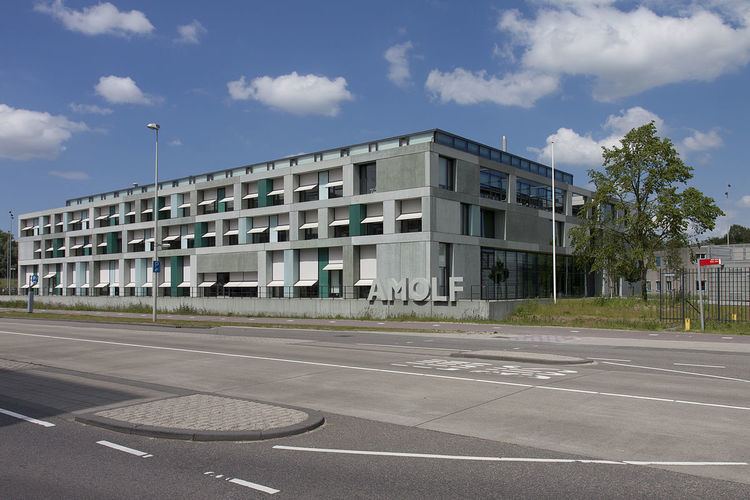Province North Holland | Phone +31 20 754 7100 | |
 | ||
Address Science Park 104, 1098 XG Amsterdam, Netherlands Hours Closed now Monday8:30AM–5PMTuesday8:30AM–5PMWednesday8:30AM–5PMThursday8:30AM–5PMFriday8:30AM–5PMSaturdayClosedSundayClosed Similar University of Amsterdam, Communi & Marketing, Amsterdam University College, Centrum Wiskunde & Informa, Sportcent Universum Profiles | ||
Bio and nano physics at fom amolf
AMOLF, also known by its full name as FOM Institute AMOLF is one of the four research institutes which was operated by the Dutch Foundation for Fundamental Research on Matter, also known as FOM, until 31 December 2016, when the latter was integrated into the Netherlands Organisation for Scientific Research (NWO). The institute is one of the leading research institutes in Europe in the fields of physics and biological physics. It focuses on two main research themes: nanophotonics and physics of biomolecular systems. The institute is located at the Amsterdam Science Park in Amsterdam, the Netherlands.
Contents
- Bio and nano physics at fom amolf
- Amolf opendag 2014
- History
- Structure and organization
- Research
- References
Amolf opendag 2014
History
The institute was established in 1946 by the government as the FOM Laboratory for Mass Spectrography. In 1960, it was renamed to Laboratory for Mass Separation, and in 1966 it was reorganized into a research institute and renamed FOM Institute for Atomic and Molecular Physics (AMOLF).
The original research goal was to demonstrate the separation of uranium isotopes by electromagnetic separation methods, a topic of great strategic importance after world war II. To reach this goal, a number of novelanalytical instrumentation were developed, starting with the development of mass-spectrometric tools. In 1953 AMOLF was the first European institute to successfully enrich Uranium. Soon after, research on thermal diffusion in gases followed, as did ultracentrifuge concepts, cathode dispersion, excitation of gases by using energetic ions and research on molecular beams. The gas-ultracentrifuge developed at AMOLF (under Jacob Kistemaker) provided a base for the commercial enrichment of Uranium at the today well-known company of URENCO in Almelo.
Structure and organization
Recognized as one of the most prestigious interdisciplinary research institutes in Europe, AMOLF is headed by its director. Huib Bakker has been director since 1 February 2016, when he succeeded Vinod Subramaniam. Each of the five departments is headed by a tenured director/group leader.
Research
Its main topics of research as of 2007 are nanophotonics, femtophysics, and "physics of life processes". It is located at the Science Park Amsterdam and has a total staff of around 175 people; 100 scientists, 50 engineers and 25 support staff.
